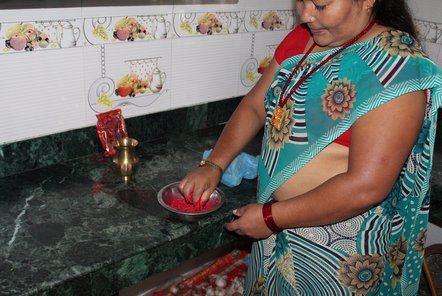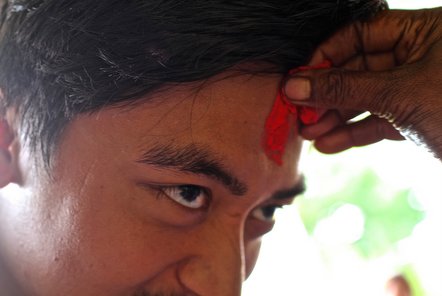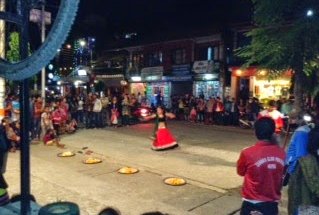Volunteers celebrate Dashain and Tihar festivals in Nepal!
Volunteer Experiences / 18 November 2015
Our Volunteer Coordinator Janice tells us about the festivals of Dashain and Tihar and how our volunteers celebrated the festivities in Nepal.
Dashain is the longest festival of Nepal which lasts for fifteen days and is celebrated by everyone throughout the country. This festival occurs during the bright lunar fortnight ending on the day of the full moon. This festival commemorates victory of all the gods over evil. This festival remembers the story from Ramayan which is, as the Nepalese people believe, when Lord Ram slaughtered Ravana the king of demons, after the Goddess Durga slayed the demon Mahisasur.
The first nine days signifies the battle between Goddess Durga and Mahisasur. The tenth day is when Goddess Durga won over Mahisasur and remaining five days are to celebrate this victory!

On the tenth day children in the family receive tika from the elders of their family. Tika is a paste made out of rice, red colour and yoghurt. The mixture is put on the forehead and blessings are passed down from elders to the youngers.
We celebrated our Dashain at Street Children's Centre with Max, one of our volunteers who was given tika by Aama, the mother of the family.

A week after Dashain it was the time for Tihar! Tihar is the festival of lights. All the houses put diyo out in their balcony. Diyo is nepali lights. These are traditionally prepared with oil and are tiny round vessels made out of mud. The small vessels are filled with oil and cotton strings are placed in it. Nowadays, electrical lights are often used instead of diyos, but the meaning is the same. All the houses are still brightly lit with colourful lights!
Tihar is celebrated for five days, where the crow is worpshipped on the first day by putting out food for them. The second day is when the dogs are worshipped by putting tika and flower garlands around their neck. The third day is the day for worshipping cows, which symbolises wealth in Hinduism. The day when the cow is worshipped is the day for Laxmi puga, goddess of wealth. People make rangoli at their doorstep and prepare the house for goddess Laxmi to come in and bless the families. The last day is called 'bhai tika', the day for brothers and sisters. It is the day when brothers receive tika from their sister.
Our volunteers, Max, Egle and Peter went to street kids and observed this day. Max received tika from Asmita as Asmita puts tika to all her brothers living with them at the Street Children's Centre. They exchanged gifts to one another as to bless them with good health and long life.

After we finished the tika ceremony, our volunteers accompanied the kids to 'bhailo' which is similar to Christmas carols. Groups of people visit different houses in their neighbourhood, sing and dance and the household blesses those who come with a delicious sel roti (bread similar to doughnut but is a little big in size and is made out of rice flour and deep fried in oil) and money.
All our volunteers who came during this time were able to observe Nepali culture more closely through these festivals and all had a fantastic experience!
You can find out more about volunteering in Nepal, here.







